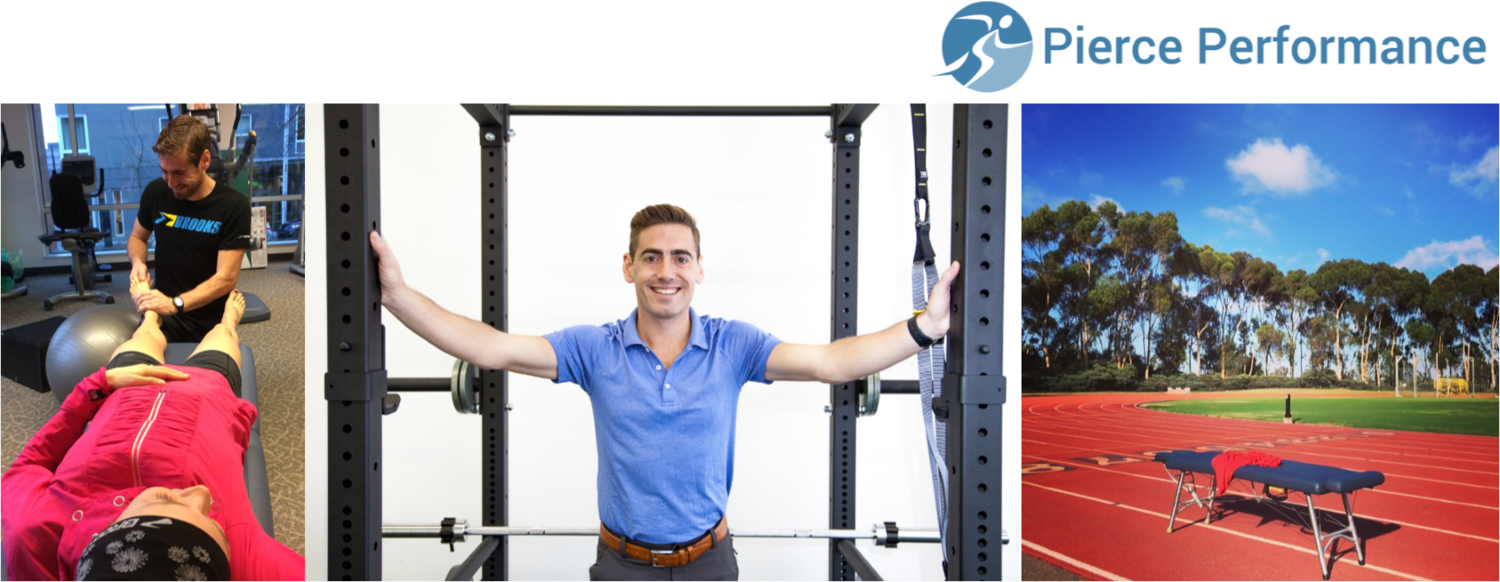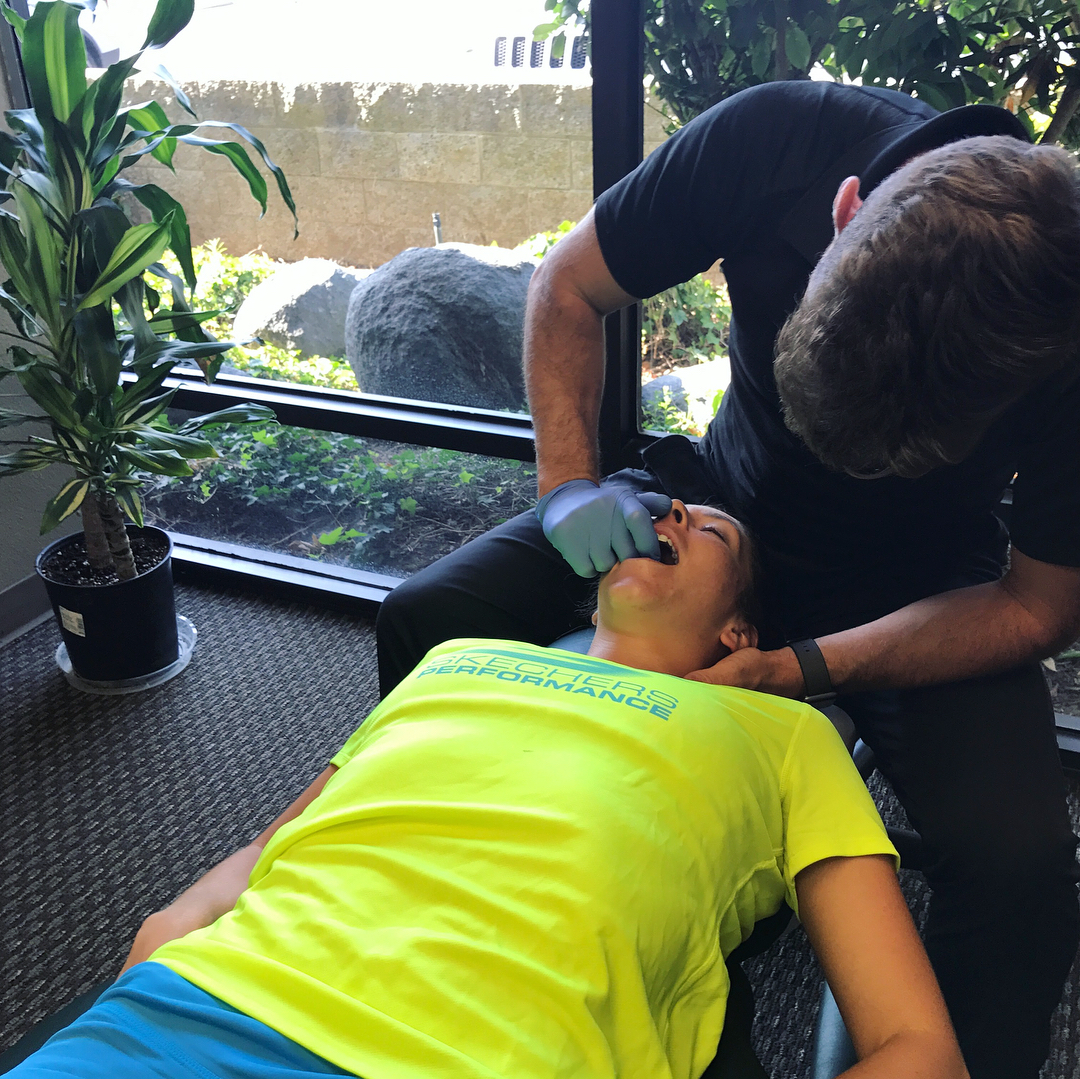This post will highlight an interesting issue that came up in the clinic last year for myself and an athlete that I was working with. The athlete in question is an elite race walker and had had ‘on again, off again’ bouts of hamstring pain, soreness, and tightness throughout the season. We successfully managed it and treated it as it arose, but on one later flare up I had the intuition to check a little bit further up the chain from where we typically work and noticed right away that the alignment of her cervical spine, especially upper cervical spine, and even her jaw were not optimal. Just a brief palpation produced pinpoint tenderness at C1-C2, the occipital region of the skull, and on the same side of her jaw as her hamstring problem.
With this experience I was reminded that treating hamstring injuries and pain in elite athletes is complex business. We ought to always consider both local and global aspects of the problem.
Why would this athlete’s cervical alignment and jaw issues relate to her hamstring?
There are actually several factors that could be at play.
1. Lovett Reactor Theory suggests relationships of the upper and lower aspects of the spine, such that ipsilateral rotation of C1 (‘the atlas’) pairs with L5 in the gait, C2 pairs with L4, and so on. It’s interesting to note that for the upper three cervical vertebrae, that rotation occurs in the same direction as the lumbar rotation occurs. This changes at the fourth vertebrae, with a counter-rotational relationship for the rest of the pairs.
Source: Neurosomatic Educators, INC
To take a look at why there is this rotation in the same direction for the first three vertebrae, think about what is happening in the gait. When an athlete is swinging a leg through and trying to reach for the ground and gain stride length, there is rotation of the hip forward. That rotation of the hip forward pairs with the movement of the two lower lumbar vertebrae, and then the shoulder girdle counter-rotates away from that, clearing or blocking as it’s called, as that same side of the arm extends. Because the shoulder girdle is rotating counter to the hip girdle, the head has to rotate counter to the shoulder, or you could say the head has to rotate with the hip, so that the alignment and the view of the athlete or individual is still on a straight line forward.
You can think of this on an evolutionary scale as someone always wanting to have their eyes forward on the horizon as they travel across the plane. A hunter-gatherer would want to always keep its eyes on the target and not be moving its head from side to side.
The occipital bone also pairs with the sacrum which plays a large role in normative hamstring function. I personally never appreciate a hamstring problem in the office without also thinking about how the sacrum and the ligaments of the sacrum are functioning. Often, rebalancing the TMJ or temporomandibular joint, occipital musculature, and cervical intrinsics improves posture and head position; it also allows clean pelvic mechanics. So, if you’re having a sticky situation where you can’t get the changes that you want in the pelvis, or you can’t get the symptoms to go away completely, you can’t get the alignment of the pelvis to hold, it’s worth looking at the upper cervical and occipital region as well as the temporomandibular joint which plays a great role in the alignment of the previous listed structures.
2. In addition to this Lovett Reactor Theory and pairing of the vertebrae, you also have the simple fact that an athlete is always trying to go forward quickly. So when we have endurance or power/speed athletes that are always trying to get from point A to point B quickly, they tend to have a forward head position and a forward lean, which in and of itself changes the balance of weight and tension on the whole body. We’ve all seen the chiropractic diagrams where the head position relative to the plumb line changes the amount of weight and stress on your posture, putting you into an anterior position. That sets up a cascade where the hamstrings actually have to work harder just to maintain an upright posture.
3. Furthermore, with elite athletes, jaw clenching, enduring high pain levels, and chronic stress all contribute to other physical stresses on the system, besides any other prior injury or stresses that occur due to misalignment of the spine. Speaking generally, many athletes are very goal driven, type A, high stress people, and this kind of environment or social situation I think further can manifest in some of these physical dysfunctions or alignments. It’s not a surprise to me when I have an elite athlete grinding their teeth or clenching their jaw at night or doing so during bouts of heavy training when they’re under significant amounts of duress.
In this specific case, treatment with this racewalker improved her single leg flexion, (basically a test of hamstring range of motion and mobility) by 20 degrees and with zero pain at that improved range, with work for the masseter, buccinator, and pterygloids only. We went on to additionally treat some of the intrinsics of the cervical spine as well as the suboccipital musculature.
I hope you’ve gotten something from this reflection on the dynamics of posture, environmental and emotional aspects of stress, and how that plays into the physical and the structural. Feel free to leave a comment with your thoughts, and make sure to check your jaw next time your hamstring hurts. Cheers!


